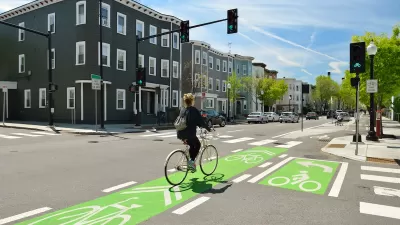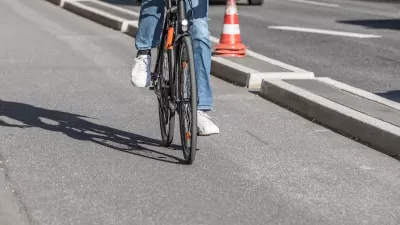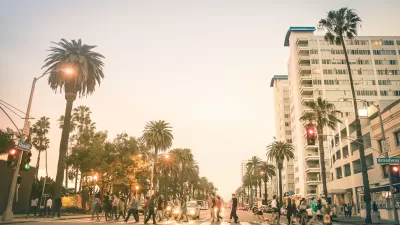A simple walk through your community can reveal infrastructure gaps and highlight where cities can make streets safer for pedestrians.

Safe streets advocates have a simple starting point for making change to pedestrian infrastructure in their cities: taking a walk. As Edward Erfurt notes in a piece for Strong Towns, any effort to improve road safety starts with an evaluation of current conditions.
“The Strong Towns Crash Analysis Studio has helped residents of cities across North America review serious crashes in their communities,” Erfurt writes. The analyses brought to light oversights (for example, yield signs installed at four-way intersections rather than stop signs) and improper uses of road infrastructure.
According to Erfurt, “There is nothing more memorable and impactful than experiencing our communities with each other on foot. Something as simple as a walk allows us to have a conversation informed by the existing conditions, as well as letting us illustrate items like the economic benefits of pedestrian-friendly designs to local officials.”
A “walking audit” can offer a new perspective on a community and illuminate infrastructure needs. “In addition to members of the design team and traffic safety officials, a good audit will include a cross section of the municipality’s experts in areas such as engineering, planning, maintenance and law enforcement. It will also include any individual in the area known to have a disability or particular struggle that will be impacted by the design.”
FULL STORY: Want To Create Change Quickly? Start by Taking a Walk.

Study: Maui’s Plan to Convert Vacation Rentals to Long-Term Housing Could Cause Nearly $1 Billion Economic Loss
The plan would reduce visitor accommodation by 25,% resulting in 1,900 jobs lost.

North Texas Transit Leaders Tout Benefits of TOD for Growing Region
At a summit focused on transit-oriented development, policymakers discussed how North Texas’ expanded light rail system can serve as a tool for economic growth.

Why Should We Subsidize Public Transportation?
Many public transit agencies face financial stress due to rising costs, declining fare revenue, and declining subsidies. Transit advocates must provide a strong business case for increasing public transit funding.

How to Make US Trains Faster
Changes to boarding platforms and a switch to electric trains could improve U.S. passenger rail service without the added cost of high-speed rail.

Columbia’s Revitalized ‘Loop’ Is a Hub for Local Entrepreneurs
A focus on small businesses is helping a commercial corridor in Columbia, Missouri thrive.

Invasive Insect Threatens Minnesota’s Ash Forests
The Emerald Ash Borer is a rapidly spreading invasive pest threatening Minnesota’s ash trees, and homeowners are encouraged to plant diverse replacement species, avoid moving ash firewood, and monitor for signs of infestation.
Urban Design for Planners 1: Software Tools
This six-course series explores essential urban design concepts using open source software and equips planners with the tools they need to participate fully in the urban design process.
Planning for Universal Design
Learn the tools for implementing Universal Design in planning regulations.
Ascent Environmental
Borough of Carlisle
Institute for Housing and Urban Development Studies (IHS)
City of Grandview
Harvard GSD Executive Education
Toledo-Lucas County Plan Commissions
Salt Lake City
NYU Wagner Graduate School of Public Service





























